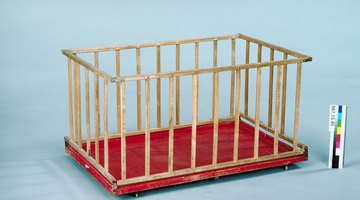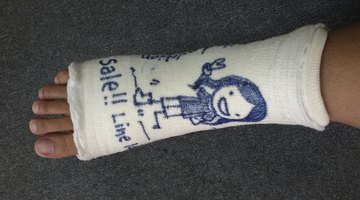The Safest Way for Toddlers to Go Down Stairs
At one point or another, your busy little toddler is going to try to tackle those stairs. You can teach her a safe way to navigate them or she'll wing it and try her own way. The safest method for going down stairs depends on your child’s age, stage of development and comfort with her abilities.
The Backward Method
When your child is around 18 months old, the American Academy of Pediatrics recommends teaching her how to go down the stairs backward, since she usually only sees you go down facing forward and will probably try what she has seen. This is basically the reverse of how she got to the top of the stairs to begin with. Position your body below her on the stairs, with her back to you and gently ease her each ankle to the step below. Use simple words to explain what she should be doing, like, “See, one foot down. Great. Now the other foot.” Repeat several times over the course of a few weeks until she has mastered this skill.
Method for Walkers
What to Do When Toddler Climbs out of Crib
Learn More
The AAP suggests teaching your child to walk down the stairs using the handrail once she is able to walk comfortably. Place her at the top of the stairs, if she hasn’t climbed them herself already, and stand below her. Instruct her to grab the handrail and slowly step down one step at a time. Stay close to her while she practices this until she has mastered this method.
Scooting Down
If your toddler seems uneasy about walking down the stairs, but is either beyond the backward method or refuses to do it, you can always try teaching her to scoot down on her bottom. Place your little one at the bottom of the stairs facing you. Sit on the stairs a couple of steps up from the bottom. Use your feet and scoot your bottom down to the next step. Accompany this motion with the instructions like, “Go feet first like Mommy.” Pick your child up and sit her a couple steps above you. Position her feet on the step below the one she is sitting on and use your hand to help her scoot her bottom to the next step down. Repeat this a few times. Follow this activity with a happy dance, praise and smiles. Practice this over the course of a few weeks until she gets the hang of it.
Safety Concerns

How to Help a Child Who Cannot Pronounce the Letter S
Learn More
Since toddlers have yet to master the art of coordination and depth perception, you need to be aware of the safety concerns that come with navigating those stairs. The AAP suggests carpeting your stairs to reduce the risk of slipping. Keep your stairs free of any clutter and debris. Even the smallest wrapper can cause your child to slip and fall. Baby gates are meant to help keep your child safe and out of potentially dangerous areas. A hardware-mounted gate should be installed at the top of any stairs and safety gates should placed at the bottom of the stairs and any other room you want to her to stay out of. However, no matter how secure the gate is, it’s no substitute for adult supervision. The American Academy of Pediatrics and Kids Health both caution parents to never leave a small child unattended in areas with stairs, even if they have safety gates installed.









